

From telephones to radio and television appliances, the art of communicating information has become so important that life without these machines for many of us would be difficult to comprehend.
And for the last several dacades, there are machines called computers that "package and send" much of that digital information -- so we can see and hear stories from the past, present and future like never before. Using binary data to simulate reality, computers can mentally transport us to people or places in entertaining ways.
At times, it seems that the primary objective of our modern technology is to transport information or material goods to places we want. Whether it's knowledge for our minds or food for our bodies, the science of transporting things keeps us going.
Second to the science of transportation is the art of agriculture. Of these two modern technologies, there exist a nation on earth that excels in both.
The United States of America is known for its aerospace and agriculture technologies. From remarkable space ships to the vast farmlands that feed many other nations, the modern technology of the USA helps keep the world moving.
Although there are some aspects of modern agricultural technology that has recently been discovered as less than helpful to the environment -- such as corporate mismanagement in creating certain synthetic and toxic chemicals -- which can damage the health of plants and animals -- including people who consume them, in the greater picture of things, the USA has helped the world with agricultural technology.
It is interesting to note that, according to ancient stories from the age of Atlantis, our ancestors were also once capable of unique flight and farming technologies.
Most probably not capable of space flight, it does however seem that the Atlanteans did master the art of "kite-plane" technology. Why no samples of their work has been found by archeologist to date is because such aircraft were not built to last very long.
Moreover, the situation that destroyed Atlantis also erased the few aircraft that were created. Since most all aircraft are built out of very light materials, the longevity of any is no match to the forces of natural errosion over many hundreds of years.
Most aircraft built today rely on materials like aluminum or modern composite parts -- and like other forms of land-base transportation, they use wheels on the ground and burn fossil fuel within a chamber area that drives a friction generating prop-shaft to pull or push the aircraft through the atmosphere.
While some operate from water, this became unpopular about seventy years ago in favor of aircraft that were not expose to the corrosive effects of oxidation associated with metal and seawater.
One can only imagine how the Atlanteans designed their aircraft. Although much of this lost aeronautical technology is covered elsewhere on this web site, it should be noted that Atlantean aircraft probably looked much like a modern day deltoid hang-glider -- the most simplistic and easiest to construct method of human flight available to date.
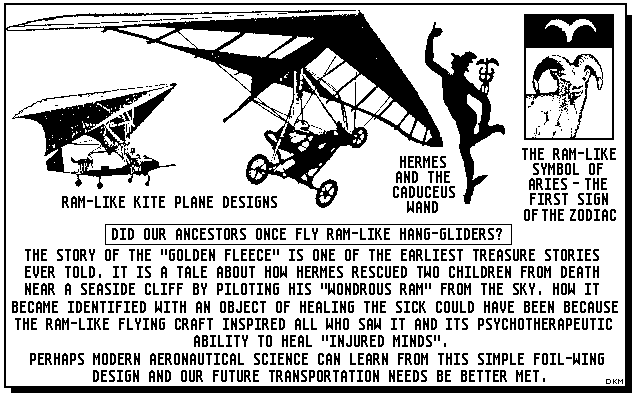
Located "in the far western realm" from the Mediterranean view, the Hesperides, if not the very Garden of Eden itself, was protected by a dragon-like apparition.

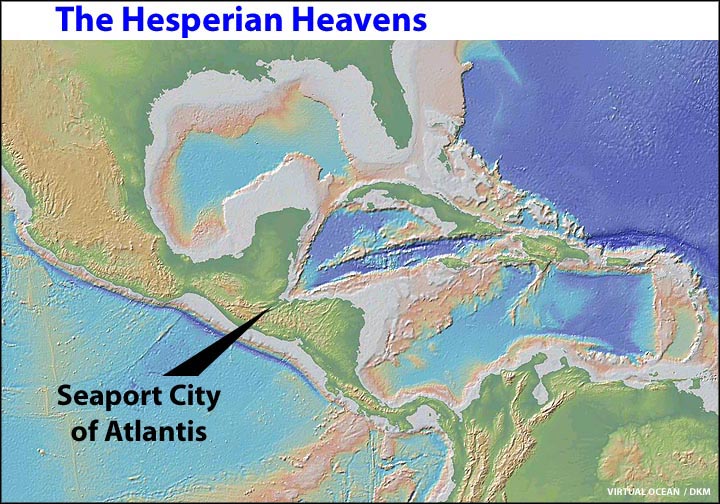
In Genesis 3.24, the statement "at the east of the Garden of Eden...a flaming sword which turned every way" sounds very much like some sort of gimbaled device that could destroy a moving target by way of beaming heat.
If such a powerful weapon once existed in ancient times and was used to protect a valuable garden of golden apples from pirates, then is there a great treasure garden awaiting rediscovery by some archeologist somewhere?
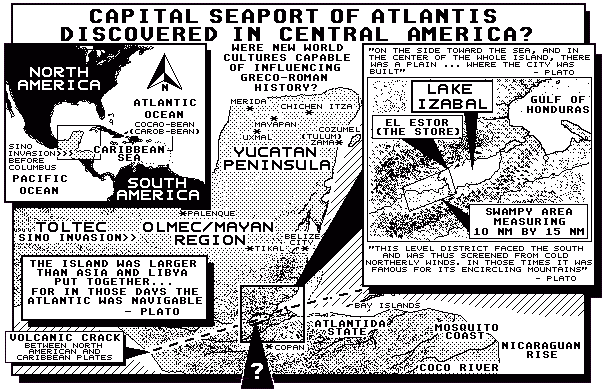
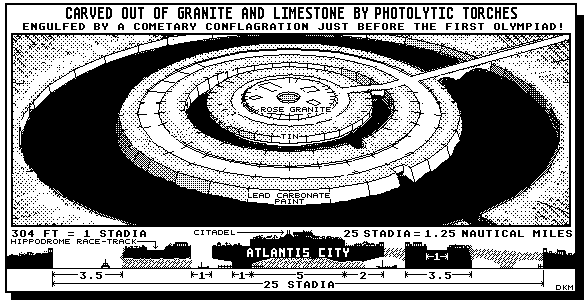
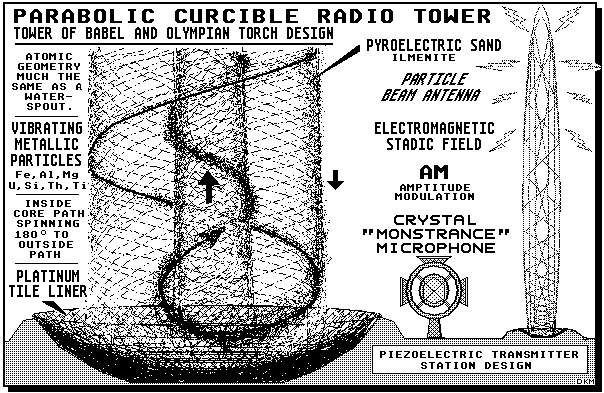
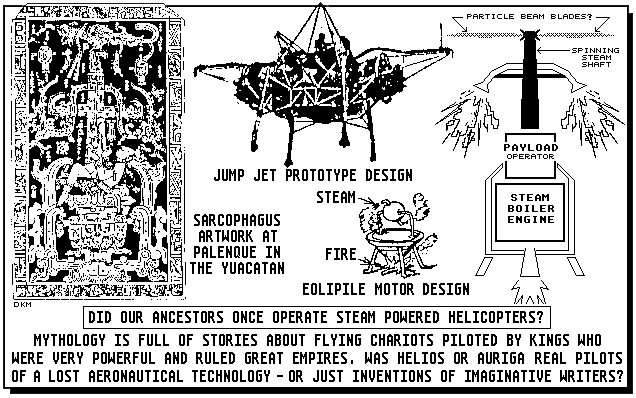
Regarding the subject of flying vehicles again, the idea of a steam engine to power ancient aircraft can be found within mythical and Biblical stories -- where, for example, Helios -- and even God himself, once used some kind of noisy whirlwind flying platform technology that may have been powered by steam energy.
If a type of "particle-beam" prop design -- together with a light-weight steam motor, was built properly, it may have been possible to drive a verticle shaft with enough power to lift a payload that included a pilot.
Imagine if this prehistoric "particle-beam" technology from long ago was discovered again and applied to our modern aircraft designs.
Imagine the recycling possibilities if this "particle-beam" technology could help divide our "trash" into reusable elements.
Think of the construction possibilities if "super farms" were created by cutting the landscape into irrigated gardens -- or develop earth-dams for hydro-electric energy projects. A warning should be noted on this suggestion because humans have in the past -- and continue today to sometimes misuse agriculture technology, to destroy much of the natural hydrology of this planet.
Speaking of agriculture technology again, because the purpose of farming is to provide nutritional elements for the public, then perhaps the science of farming itself is really the art of gathering, transporting and marketing valuable elements from the soil by way of plants and animals.
If modern agriculture is in the business of feeding people for health reasons, then perhaps the technology should include the art of "seeding the soil" with nobel elements collected from mining projects so that the plants can "package the elements" for human consumption.
It may not take much of these noble elements to give good nutrition -- for example, gold can go a very long way if it is properly "packaged" microscopically within the plant or the animal that eats the plant. In fact, too much of it, like anything, can be harmful.
Too much silver can be harmful -- however, because gold does not oxidize, it may be better biochemically usable within our bodies. A rule of thumb may be that if you can "see the noble element" in your food, then it may be too large to be absorbed properly.
Certain elements like silver may have limited health benefits because of the oxidation aspects of the element, but trace amounts of gold -- together with manganese, may be elements that could help in human longevity.
Present agricultural and medical technology is just beginning to realize that certain elements can be very nutritious to the memory of body cells. Because the modern periodical table of the elements is relatively a recent discovery, we are just beginning to realize the value of the noble elements within our food.
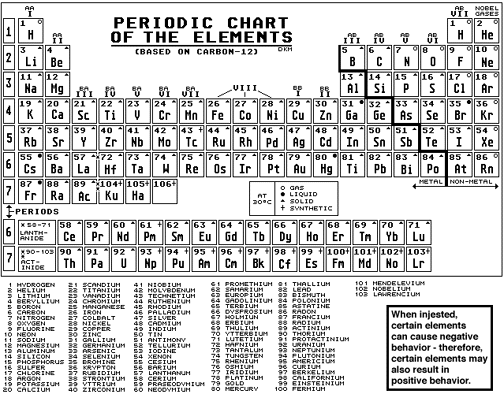
The modern periodical table of the elements is truely nature's "spice-rack" from which
we can cook up chemical formulas that can help us in our longevity.
Whether the inhabitants of the Hesperides realized the value of gold in their golden apples is not knowable, but perhaps they did -- because why else would they be so defensive in protecting their garden with a "flaming sword"?